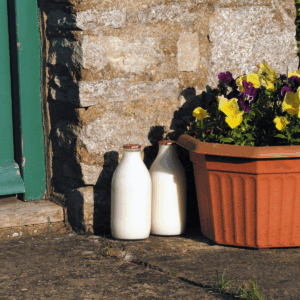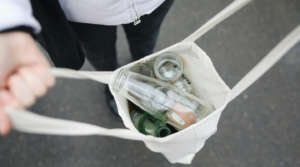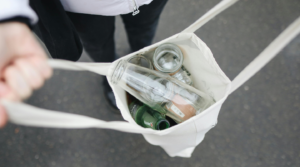What is glass reuse?
Glass reuse is not the same as repurposing or upcycling. Rather than turning bottles and jars into vases or storage containers, reuse systems keep the packaging in circulation for its original purpose. A reused glass bottle is collected, washed, sterilised, and refilled so it can go straight back into service. This simple loop avoids the energy-intensive process of breaking glass down and remanufacturing it, cutting waste and reducing carbon emissions while keeping valuable packaging in use for longer.
What are the benefits of reuse?
Saves energy and cuts emissions
Reusing glass bottles avoids the high heat and energy needed to melt and reform them. That means fewer raw materials mined and lower greenhouse gas emissions.
Lower carbon footprint
Even a few reuses of a glass container can already lower its carbon footprint compared with single-use alternatives like plastic or carton. With 20 to 30 uses over its lifetime, each bottle or jar in a reuse system makes a real difference in carbon savings.
Keeps resources in the loop
Every reused bottle stays in circulation for longer, reducing demand for new packaging and helping to build a truly circular system.
Cuts waste
Instead of being thrown away after one use, bottles are collected, washed, and sent straight back out again, keeping waste out of bins and away from landfill.

A fresh take on glass reuse – The Modern Milkman
The challenges of glass reuse
While reuse has clear environmental benefits, it is not without challenges. Setting up a robust reuse system requires investment in collection, cleaning, and redistribution infrastructure. Bottles and jars need to be tracked, transported back to cleaning facilities, and sterilised to meet safety standards. This makes the logistics more complex than single-use systems.
Not all glass containers are easy to reuse. Different sizes, shapes, or imported products can complicate standardisation, making it harder to establish efficient loops. For reuse to work at scale, businesses and households need to participate consistently, and there must be incentives for returning containers.
Cost is another factor. Reuse systems often require upfront investment, and businesses must balance operational expenses with competitive pricing. While the environmental benefits are clear, creating a financially sustainable model is essential to maintain long-term adoption.
Despite these challenges, reuse systems remain a practical and impactful way to reduce waste and carbon emissions. With the right infrastructure, support, and consumer engagement, glass reuse can become a mainstream solution, keeping containers in circulation far longer than single-use packaging ever could.
Why reuse matters
Glass reuse is simple, practical, and powerful. By keeping containers in circulation, we save energy, reduce greenhouse gas emissions, and cut down on waste. Every bottle or jar that is returned, cleaned, and refilled adds up to a significant environmental impact. Reuse is not just a clever idea for the future. It is a system that works today, across beverages, condiments, personal care products, and more. Choosing reusable glass is a small change with a big effect, helping create a circular economy where materials are valued, waste is minimised, and every container can do more for the planet.

Reuse, repurpose, refill or recycle?
Related posts







